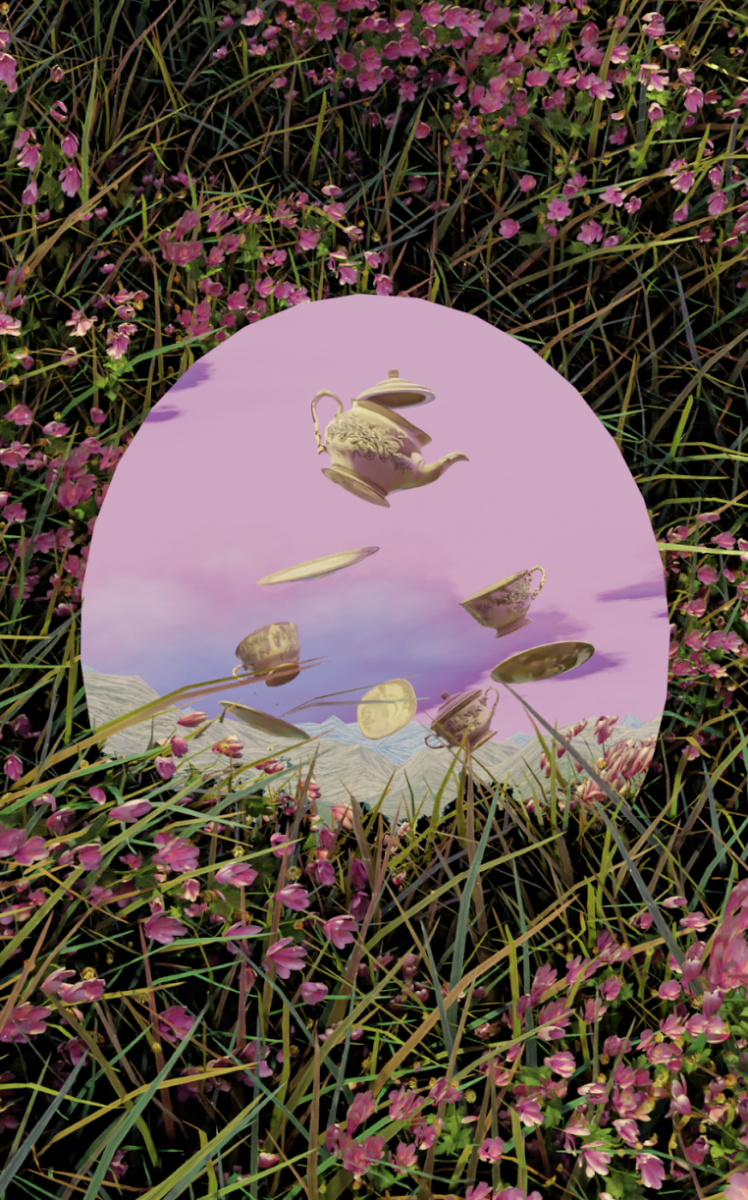The Innovation and Virtual Reality Studios in D.H. Hill Jr. Library offers a space for students to bring their artwork and photos to life through the use of new, accessible hologram technology.
Jeff Wilkinson, a graduate student in graphic and experience design, and NC State alum RJ Washington created holograms for an exhibit with University Libraries, showcasing their artwork through holographic displays from the company Looking Glass.
Colin Keenan, a University Libraries specialist who works with the Virtual Reality Studio, built the exhibit to showcase University Libraries’ high-tech spaces and the work of students like Wilkinson and Washington.
Keenan said holograms are 3D representations of virtual content that are 3D to the perception of the real world. He said Looking Glass uses light field displays (LFDs), which are dense fields of projected light, to give multiple vantage points of the same 3D object represented in the displays.
“Someone who’s standing one meter to your right or left is seeing a different segment of the of the full 3D picture, as if you were looking at a boat coming over the horizon through a picture frame,” Keenan said. “You have 2D-ified your view of the thing, but that you can step to a side and have an entirely different view of the object.”
Washington said holograms can be easily understood through quilt images, which display every angle of the image that is meshed together and displayed in the Looking Glass screens.
Although similar to the concept of virtual reality, Keenan said holograms provide a more accessible alternative to the medium.
“Virtual reality is by its very nature kind of inaccessible … if you don’t have equal vision in your two eyes, if you don’t have a powerful desktop to develop things on, if you don’t have a range of motion that the VR companies designed for, suddenly you’re on the outside, looking in,” Keenan said. “You can’t really look at virtual reality very easily with three other people and see the same thing. And a library is all about sharing experiences, right? Light field displays to us feel like the multi-user version of virtual reality.”
Despite the futuristic connotation behind holograms, Washington said creating them is relatively easy. Most 3D images can be translated into holograms with minimal effort, along with pictures taken with cameras with LiDAR scanning technology, a feature that comes with new iPhones.
Wilkinson said much of the technology University Libraries uses to create holograms originates from the Triangle. One of Looking Glass’s founders is from Raleigh, and one of the main engines students use to create 3D images is Unreal Engine, which is developed by Epic Games in Cary.
Wilkinson said he has seen the newness and ultramodern undertone of holograms inspire artists on campus.
“It evokes in a lot of people that kind of thrill of experimentation that here’s a new thing we can try and see what works,” Wilkinson said. “There are people who I know have started to test game design … there’s people who have experimented with creating visual puzzles that only sort of look correct from a certain angle.”
Keenan said beyond public art, LFDs have been used by NASA and MIT and are currently being used to display 3D medical imaging, such as MRIs.
“99.9% of 3D models ever made have only ever been seen in 2D because we’re looking at them on TV screens,” Keenan said. “It really makes you think about how much lost information is there.”
Keenan said the driving force behind University Libraries’ openness to new technologies like Looking Glass is due to the academic diversity at NC State.
“This is a really opportune university for multidisciplinary use of these technologies, not just engineering students having their hands on it, and not just designers having their hands on it,” Keenan said. “Working on those topics together — that’s what’s always excited us about it.”
Keenan said he invites all students to take advantage of University Libraries’ technology, whether their majors relate to digital design or not.
“If you’re a photographer, you’re already a hologram maker, if you’re a 3D modeler, you’re already a hologram maker,” Keenan said. “You’re about to see your project in the way it’s always been meant to be seen. We have thousands of hologram makers already walking around our campus and we’re excited to engage with them.”
The student-made holograms are on display in the Innovation Studio in D.H. Hill Jr. Library and the Lawrence and Ella Apple Technology Showcase in Hunt Library.
To create your own hologram or use other technology owned by University Libraries, complete a University Libraries Technology Consultation form.













